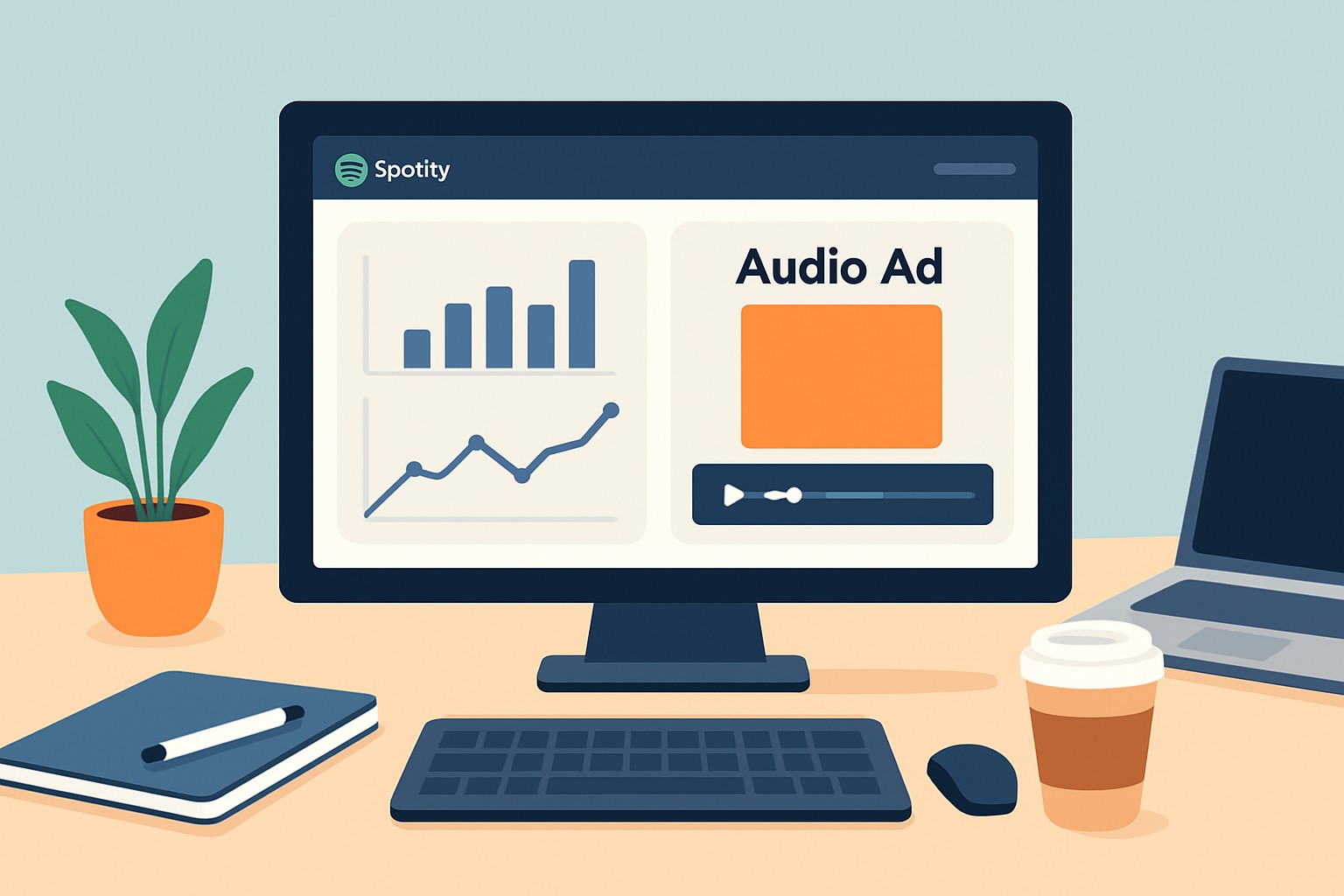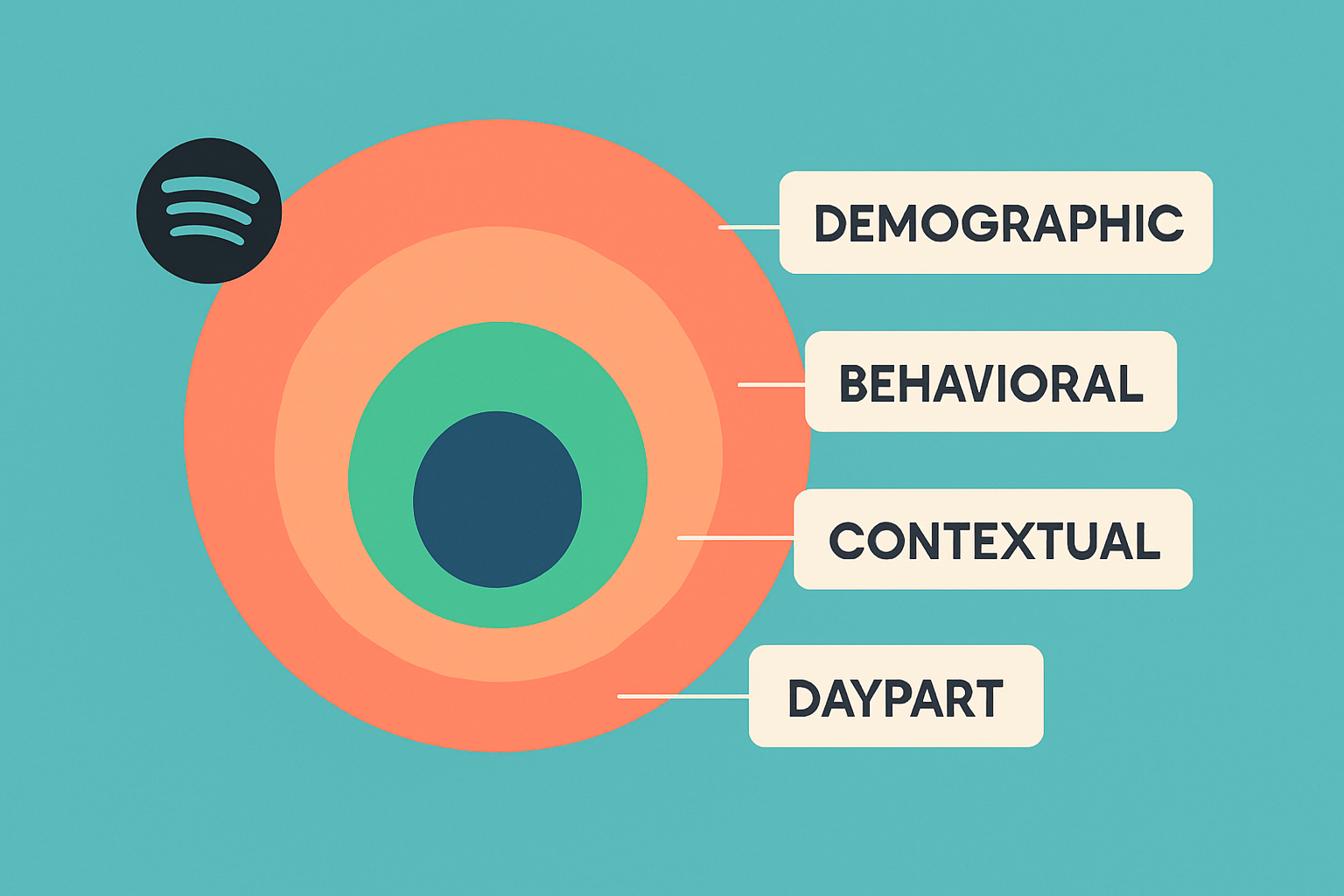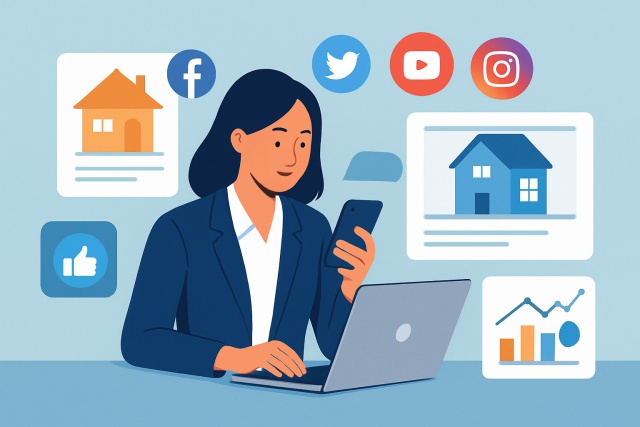Spotify Advertising Made Simple with Targeting Tips


Spotify has truly flipped the script on how millions enjoy audio, offering advertisers a surprisingly versatile platform to engage with audiences who are genuinely tuned in around the globe. By pairing Spotify’s massive reach with laser-sharp targeting, marketers can seriously up their ad game and see better returns on their investment.
Getting to Know Spotify Ads with Different Types and Formats
Spotify rolls out a variety of ad formats tailored to hit different marketing goals just right. You’ve got audio ads that pop up between songs, video ads that grab your eyeballs with lively visuals and display ads crafted to give your brand a little extra shine.
- Audio Ads: These are short, interruptive messages that pop up between songs. They’re great for building brand awareness and striking up a connection with listeners while they’re on the go. Think of them as little nudges in the right direction.
- Video Takeover: Full-screen videos that users watch on demand. They shine when your campaign leans heavily on eye-catching visuals to grab attention and leave a lasting impression.
- Sponsored Sessions: Give users a sweet deal: ad-free listening for a limited time after they sit through a video ad. It’s a neat way to boost engagement without feeling pushy.
- Overlay Ads: These are banner displays popping up both on desktop and mobile devices. They quietly keep your brand top of mind with clickable calls-to-action that invite a click here or there—nothing too flashy, but effective.
- Homepage Takeover: This premium spot right on Spotify’s home screen is perfect when you want to shout about a product launch or big announcement—because first impressions do count.

Visual overview of Spotify’s diverse ad formats including audio, video, and display ads across devices.
A Friendly Introduction to Spotify Advertising
Sign up for a Spotify Ad Studio account using your Spotify login and your business details. It’s pretty straightforward.
Pick your campaign goal. Whether you want to boost brand awareness, drive website visits or nudge individuals to download your app, tailoring your ad will make all the difference.
Set a budget that matches your marketing goals and don’t forget to set daily spending limits so your costs don’t sneak up on you.
Zero in on your target audience by choosing factors like age, gender, location or listening habits. The more precise the better.
Upload your creative assets, whether audio files, images or videos. Just double-check they meet Spotify’s specs so everything runs smoothly.
When you set up your Spotify ad campaign, keeping things clear and to the point really pays off. It’s best to deliver a straightforward message with a simple call-to-action that truly clicks with your listeners. Good creative assets like crisp audio or eye-catching visuals usually work wonders in boosting engagement and driving conversions.
Getting the Hang of Targeting in Spotify Ads with a Little Patience
Spotify’s distinctive data and insights into listening habits give advertisers a leg up by letting them reach audiences with a level of detail most traditional platforms can’t match. When ads hit the right note by targeting effectively, they not only stretch every ad dollar further but also ramp up engagement by connecting with listeners at perfect, almost serendipitous moments.
- Demographic targeting: Reach out to users by age, gender and location to craft messages that hit closer to home.
- Behavioral targeting: Tap into listening habits and device preferences to tailor ads for those genuinely tuned in.
- Contextual targeting: Match your ads with music genres or playlists that truly vibe with your brand’s personality.
- Daypart targeting: Schedule your ads for moments when your audience is most likely to be all ears.
- Retargeting campaigns: Circle back to listeners who’ve shown interest but haven’t taken the plunge yet.
Each targeting option offers a certain finesse. When you start mixing them, you often end up with ad experiences that feel genuinely tailored, giving listener engagement and campaign results a noticeable nudge in the right direction.

Illustration of how multiple targeting strategies combine to refine ad audience on Spotify.
Step-by-Step Guide to Getting Your First Targeted Spotify Ad Campaign Off the Ground
Start by clearly defining your campaign goal—this will be the guiding light for every decision you make, whether you are looking to boost brand awareness or drive direct conversions.
Pick the ad format that fits your objective like a glove, such as audio if you want to cast a wide net or video when you are aiming for deeper engagement.
Choose detailed targeting options to zero in on your ideal listeners, factoring in demographics and their unique listening habits.
Set a realistic budget and carefully plan your campaign schedule with clear start and end dates, all while keeping an eye on those prime listening moments.
Launch your campaign and dive into Spotify Ad Studio’s analytics to see how it’s performing—be ready to make those little tweaks that can really move the needle.
Watch out for common slip-ups like casting your net too wide or neglecting creative tweaks. Avoid setting budgets that don’t pack enough punch to give your campaign a real shot. Make it a habit to peek at your analytics regularly because catching glitches early can save you a world of trouble.
Measuring Success with Your Spotify Ad Performance (Without Losing Your Mind)
Keeping a close eye on the right metrics is absolutely key to truly understanding and boosting your Spotify ad campaigns. You’ll want to watch impressions and reach carefully to get a real feel for your audience size. Keep tabs on click-through rates to gauge how engaged people actually are and use conversion tracking to tie those ad clicks back to real business results. Spotify’s platform doesn’t stop there. It also offers handy insights into engagement metrics like completion rates for audio and video ads. These can be a lifesaver when you’re fine-tuning your creatives and targeting bit by bit.
| Metric | What It Measures | Why It Matters | How to Improve |
|---|---|---|---|
| Impressions | How many times your ad pops up on screens | Gives you a good sense of your reach and brand visibility out there | Try broadening your targeting and maybe nudge your budget up a notch |
| Reach | Number of unique individuals who catch sight of your ad | Shows you just how big your audience really is | Aim for wider demographics and mix up behavioral groups to cast a bigger net |
| Click-Through Rate (CTR) | Percentage of viewers who actually click through | Reveals how engaging and spot-on your ad feels to people | Sharpen your call-to-action and refresh your creative content to grab attention |
| Conversion Tracking | Actions users take after they interact with your ad | Links your ad efforts directly to your business goals, no guessing needed | Make sure your ads sync up with clear, trackable offers that resonate |
| Engagement Rate | How individuals interact with your ad beyond just viewing | Reflects how well your campaign strikes a chord and keeps interest alive | Experiment with different creatives and targeting to find the sweet spot |
Tapping into data from performance metrics is a smart move for marketers looking to fine-tune their targeting strategies and creative assets as they go—kind of like having a GPS for your campaigns. Tools like Semrush’s Content Marketing Toolkit really come in handy here, serving up insights into keyword trends and content performance that perfectly complement your Spotify campaigns.
Advanced Targeting Tips That Can Really Up Your Spotify Ads Game
- Dive into Spotify’s treasure trove of data to get a real feel for how listeners behave and what truly catches their ear. This helps you craft ads that actually hit the bullseye.
- Build tailor-made audience groups from past interactions or your customer data to strike a chord with your most valuable listeners.
- Experiment with different blends of demographic, behavioral and contextual targeting to discover which combos get the best response.
- Put sensible limits on how often your ads play to dodge listener burnout and keep your brand shining in a good light.
- Keep fine-tuning your targeting as you go based on fresh insights from your campaigns and seasonal shifts so your ads never go stale and always stay on point.
Using advanced targeting techniques lets you really fine-tune the listening experience and make sure your ads for Spotify land as relevant and timely instead of out of left field. When listeners stumble upon ads that feel genuinely helpful rather than annoying interruptions, you will usually see engagement pick up and conversion rates often follow. It’s a good idea to regularly test your campaigns and soak up insights from trusty tools like Moz and Mangools because they can reveal little nuggets of SEO and audience wisdom that over time really help sharpen your overall digital marketing game.

Advanced Spotify ad targeting strategies highlighting data-driven personalization and campaign refinement.
Frequently Asked Questions
How much does it cost to advertise on Spotify?
Spotify Ad Studio lets you set your own budget starting as low as $250. You get to control daily spending limits which makes it a solid choice whether you’re a one-person shop or a growing business. This flexibility means you can dip your toes into advertising without breaking the bank and ramp things up if the campaign fits your marketing goals.
What is the most effective ad format for a small business just starting out?
Audio Ads usually steal the show for small businesses getting their feet wet. They’re easy on the wallet and grab attention while people are vibing to their favorite tunes. Since these ads pop up briefly, they’re perfect for building brand awareness with a quick punchy message and a strong call-to-action—especially when your marketing budget is playing it safe.
Can I target users based on the specific music genres or playlists they listen to?
Absolutely, that’s what they call Contextual Targeting. You can tuck your ads into certain music genres, moods or specific playlists. This clever move helps your message land where it really clicks and boosts engagement because the ad feels made just for that moment and mood.
How quickly can I launch a Spotify ad campaign after signing up?
If all your creative ducks are in a row, you can launch a campaign in less than an hour. Just keep in mind Spotify still gives each ad a once-over which usually takes 1 to 3 business days. So it’s smart to schedule your launch a few days ahead and avoid last-minute scrambling.
What is the most common mistake to avoid when creating a Spotify ad?
A classic pitfall is casting your net too wide which often wastes cash on listeners who aren’t that into your message. Instead, hone in with a blend of demographic, behavioral and contextual targeting to reach individuals who actually matter. Also, keep your audio ad short and sweet—think under 30 seconds—make sure it sounds top-notch and stick to one crystal-clear call-to-action for winning results.
How do I know if my Spotify ads are performing well?
You’ll want to keep a close eye on key metrics in Spotify Ad Studio like Completion Rate which tells you how many individuals stuck around for the whole ad, Click-Through Rate (CTR) and Conversions. A high completion rate usually means your ad’s got the magic touch while a low CTR could nudge you to fine-tune your targeting or call-to-action. In my experience these numbers give you the best clues on what’s working and what might need a little tweak.
Unleash Your SEO Prowess with Semrush
Are you struggling to boost your online visibility and drive more traffic to your website? Semrush is the ultimate SEO and digital marketing tool that can take your Internet Marketing game to new heights. With its powerful suite of features, you can gain a comprehensive understanding of your market, optimize your content, and outrank your competitors.
- Uncover Profitable Keywords with Advanced Research
- Analyze Your Site's Health with Detailed Audits
- Monitor Backlinks and Stay Ahead of Competitors
- Streamline Content Creation with Insights and Trends








